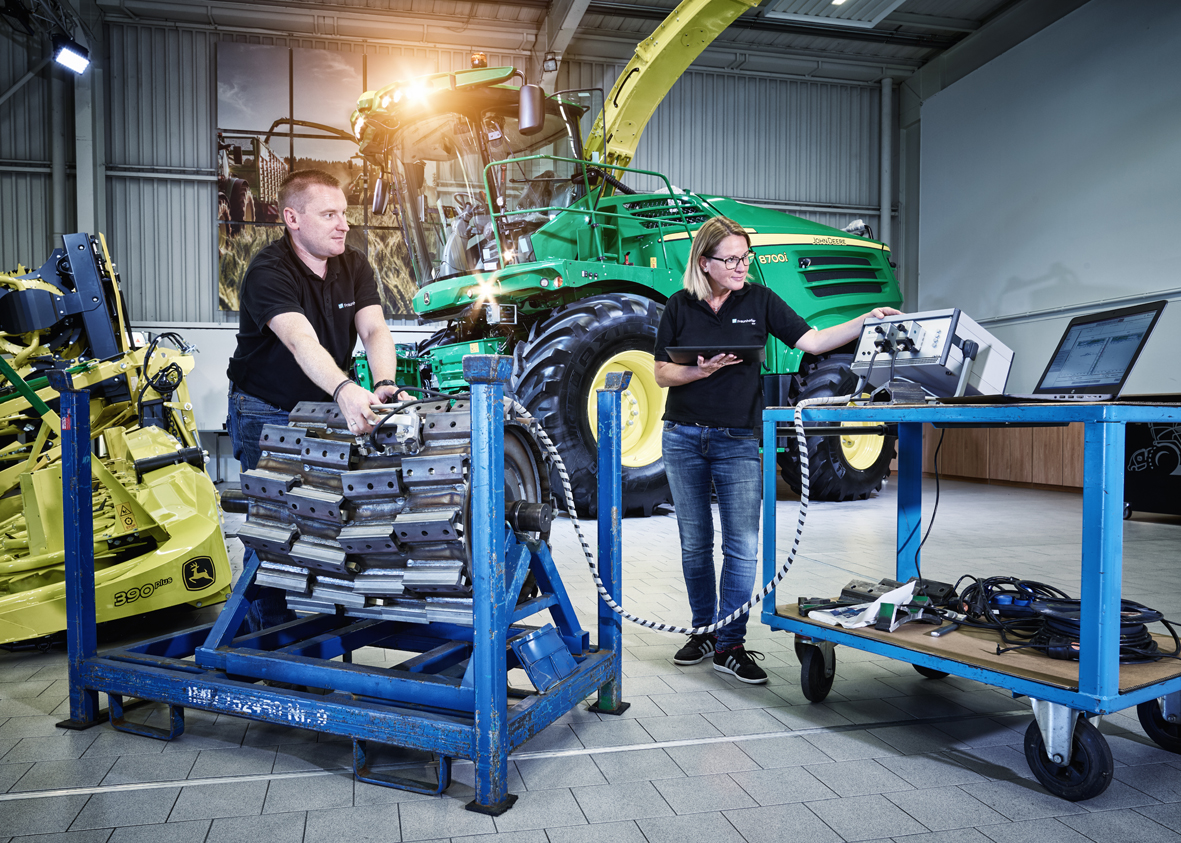Ultrasound sensors make forage harvesters more reliable
Press Release / August 28, 2017
Harvesting machinery must function without failures during the entire harvest season, for any interruption in operation will result in considerable economic losses for farmers and contractors. To increase reliability and thus, the concomitant maximum efficiency and productivity, engineers and scientists from the Fraunhofer IZFP in Saarbrücken have developed a quality assurance system for forage harvesters: The semi-automatic “LinScanDuo 2.0“ ultrasound testing system is already successfully operating at the John Deere factory in Zweibrücken.
Reliability and chopping quality are significant factors for forage harvester economy. For economical operation to be possible, the harvesting machines must guarantee, in addition to maximum availability in peak operation, high throughput. For ensuring trouble-free operation, the researchers from the Fraunhofer Institute for Nondestructive Testing IZFP have developed the “LinScanDuo 2.0“, a high-performance testing technology for testing weld seams on blade holders of forage harvesters. “LinScanDuo 2.0“ is used to improve the quality assurance process in production, increasing the productivity and safety of the entire system.
Custom system design for inspecting weld seams
At 1,200 rpms and more than 300 tonnes of harvested crop per hour, the cutting cylinders or cutterheads with their weld-on blade holders are exposed to enormous mechanical loads. The “LinScanDuo 2.0“ ultrasound sensor system developed by the Fraunhofer IZFP can reliably inspect weld seams, ensuring that they meet all requirements. “Our customized semi-automatic testing system is based on an electronically scanned phased array. Together with the inspection system software, which was custom-designed in-house, the quality of 100 percent of the weld seams on each cutterhead can be automatically inspected, analyzed, and documented comprehensively in digital format,“ explained Stefan Caspary, the engineer responsible for this project at the Fraunhofer IZFP.
High testing rate and seamless testing
Among the advantages of phased array technology are, for one, a very high testing rate with simultaneous, complete capture of the test volume, and secondly, the flexible adaptation of the testing system to the blade holders without time-consuming adjustments. The scanning process of both weld seams is cycled electronically, eliminating the need for the sensor / test head or the test object to move.
Years of experience in production quality assurance
The weld seams are inspected during the production process, allowing John Deere, the US-based world market leader in agricultural technology, to produce reliable and quality-tested components for forage harvesters at its Zweibrücken factory. “Inspecting the weld seam quality, a process that used to take about 4 hours per cutterhead, now lasts not quite 20 minutes – considerable time and costs savings for the agricultural machinery manufacturer,“ added Caspary. John Deere and the Fraunhofer IZFP have been successfully cooperating for many years in this area of component inspection. The new and optimized “LinScanDuo 2.0“ system guarantees fast and comprehensive quality assurance during the production process.
 Fraunhofer Institute for Nondestructive Testing IZFP
Fraunhofer Institute for Nondestructive Testing IZFP 